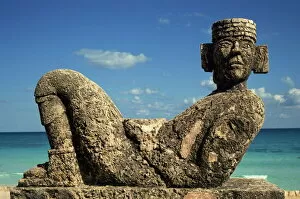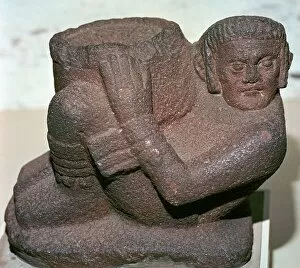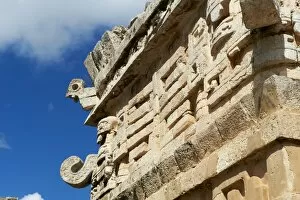Chac Mool Collection
"Unveiling the Mysteries of Chac-Mool: A Glimpse into Ancient Mayan Civilization" Step back in time and immerse yourself in the enigmatic world of Chac-Mool
All Professionally Made to Order for Quick Shipping
"Unveiling the Mysteries of Chac-Mool: A Glimpse into Ancient Mayan Civilization" Step back in time and immerse yourself in the enigmatic world of Chac-Mool, a captivating statue that holds secrets from centuries past. Found at Chichen-Itza in Yucatan, this remarkable engraving transports us to a bygone era. Crafted from limestone, a copy of the original statue stands as a testament to the artistic prowess of its creators. Dating back to 987-1185 BC, it serves as an intriguing artifact that offers insights into Mayan culture. Traveling further south to Tzintzuntzan in Michoacana, we encounter another mesmerizing Chac-Mool sculpture carved from stone during the 10th-13th century. Its intricate details leave us awe-struck and curious about its purpose. The Temple of Masks or Codz Poop beckons with its Puuc-Chenes style facade adorned with ancient artifacts discovered by Augustus Le Plongeon. His expeditions shed light on these mystical relics and their significance within Mayan society. Intriguingly captured in black and white photographs, one can almost feel transported alongside Augustus Le Plongeon himself as he explores the wonders of Chichen Itza in 1875. These images provide glimpses into his groundbreaking discoveries. A vessel shaped like Chac Mool reveals how deeply ingrained this rain-god figure was within Mayan mythology. Symbolizing abundance and fertility, it showcases their reverence for nature's forces. Venturing beyond land, divers explore hidden caverns within Mexico's Riviera Maya area. The ethereal beauty found within the depths cenote is truly breathtaking as rays of sunlight pierce through crystal-clear waters. Lastly, we encounter Toltec Altar - a chilling reminder of human sacrifice practiced between 977-1160 A. D.


















